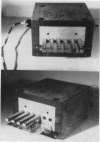Abstract
Spores of Bacillus subtilis were dried in vacuo for use in dry-heat thermal destruction tests. Survivor curve tests were conducted in a specifically designed dry-heat oven. This oven provided accurate temperature control and permitted air or nitrogen to be passed over the spores during the lethal treatment. Experiments were carried out at various flow rates of the two gases (air and nitrogen) and various temperatures, and the data were expressed as survivor curves from which the decimal reduction time (D value) was obtained. Linear regression analysis methods were used to compute the slope of the survivor curves. The results indicated that as the flow rate of gas is increased, the effect of temperature on the destruction rate of the spores is lessened, the z value becoming very large. It is believed that the higher flow rates of dry gas cause greater dehydration of the spores and that spore moisture loss is one of the major factors in determining the dry-heat thermal destruction rate of bacterial spores.
Full text
PDF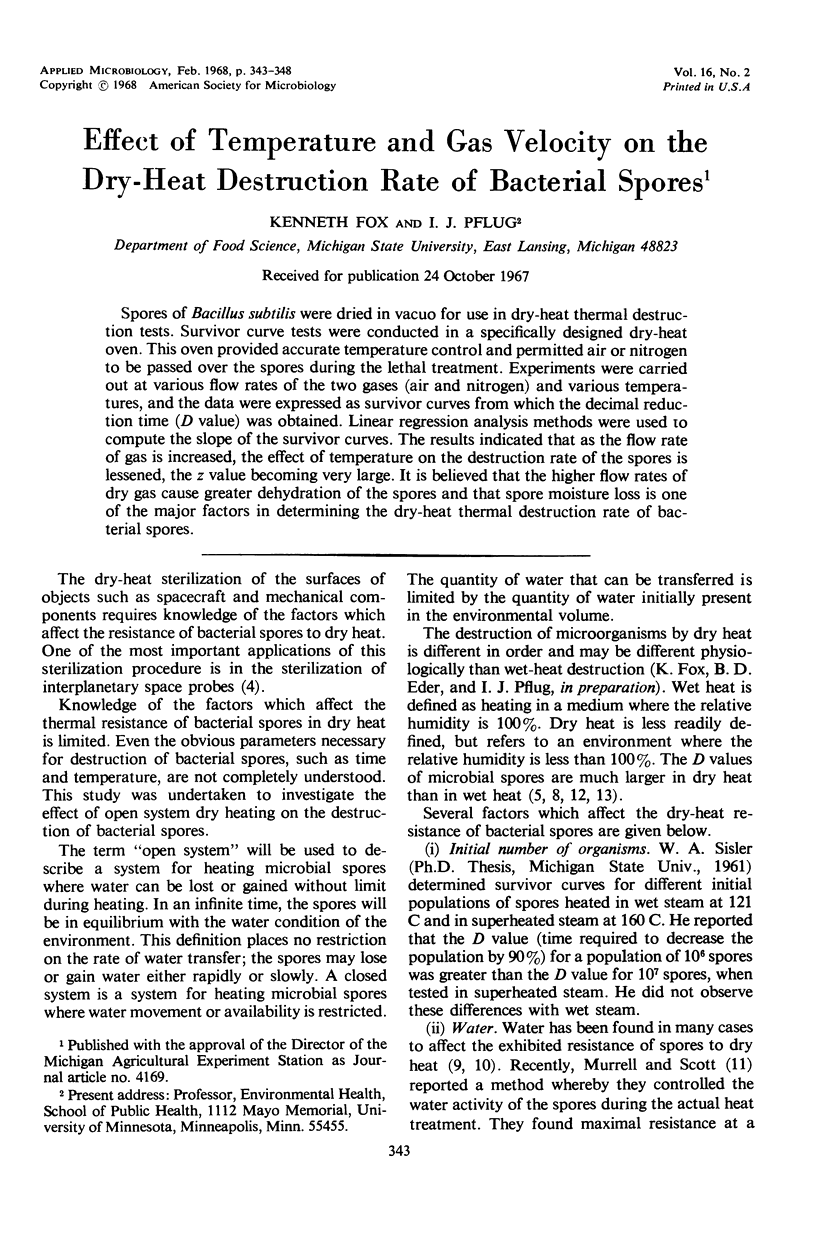
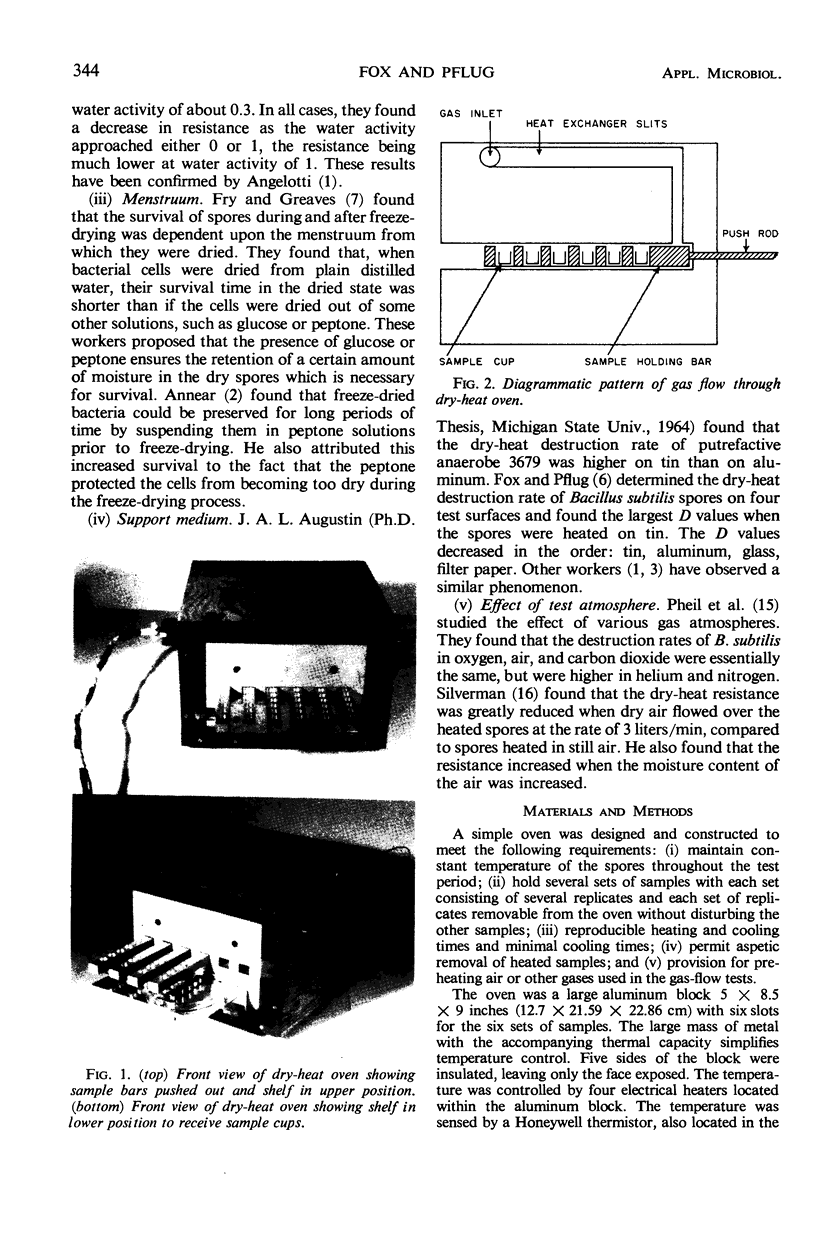
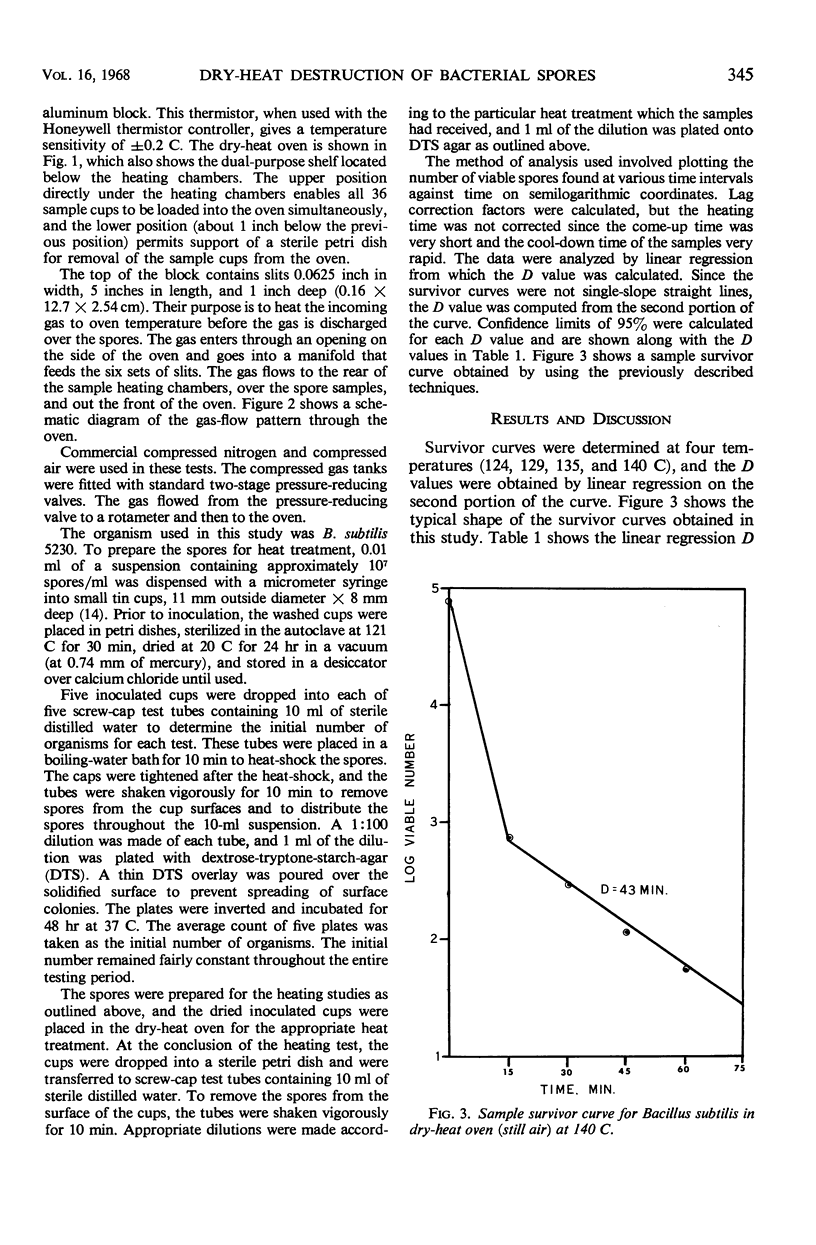
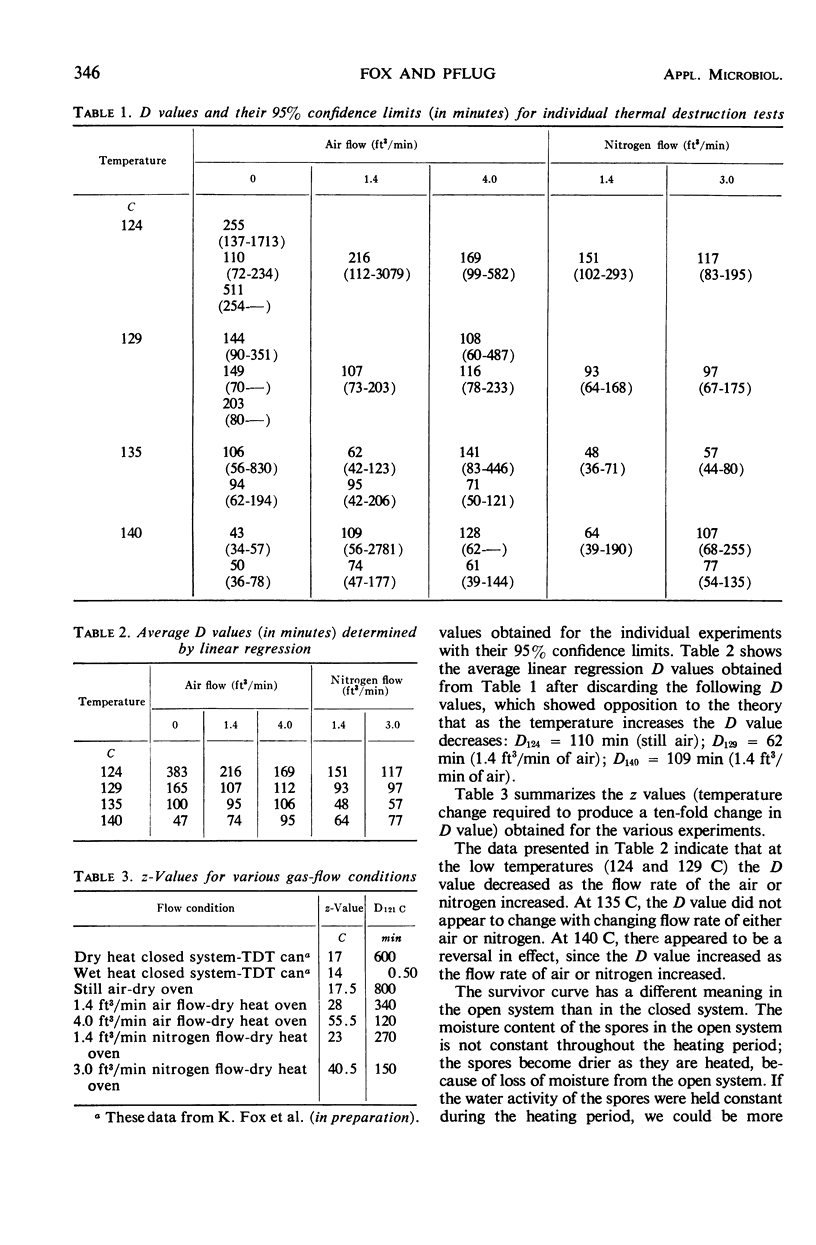
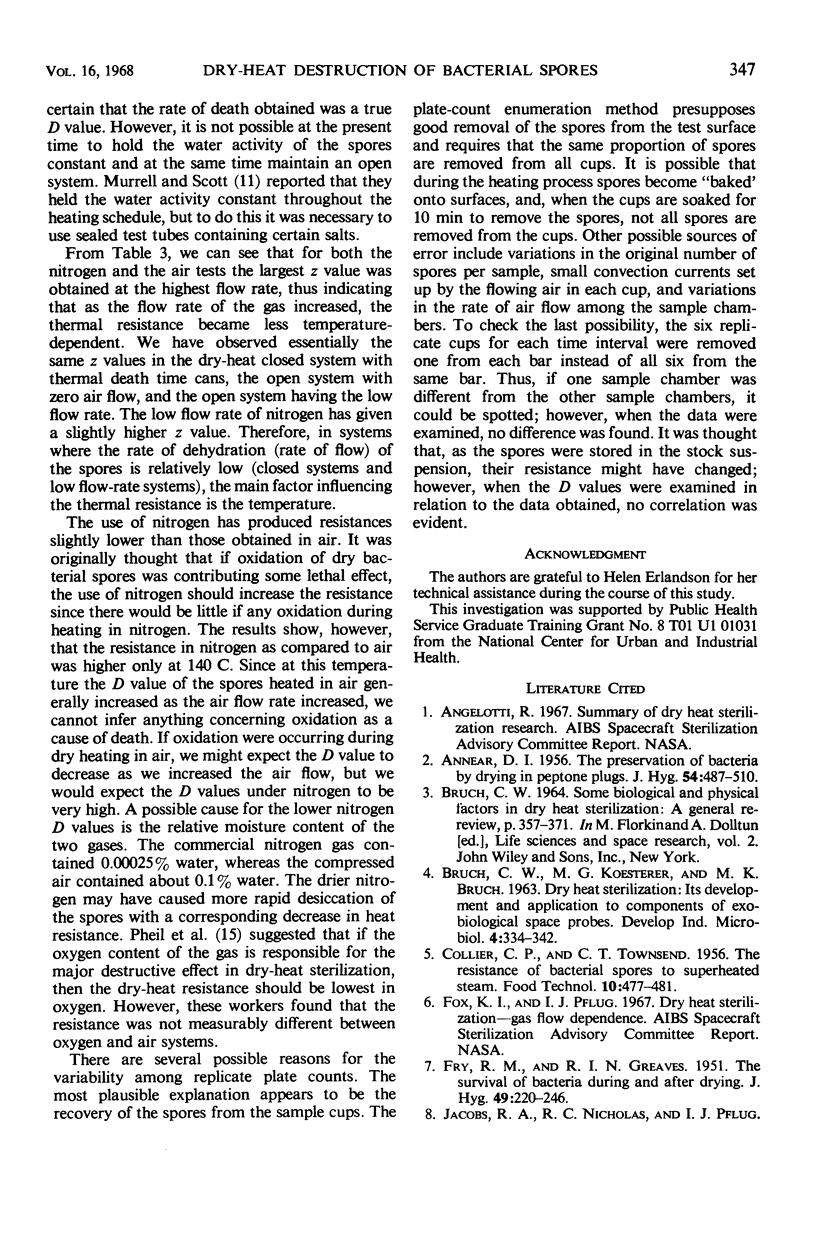
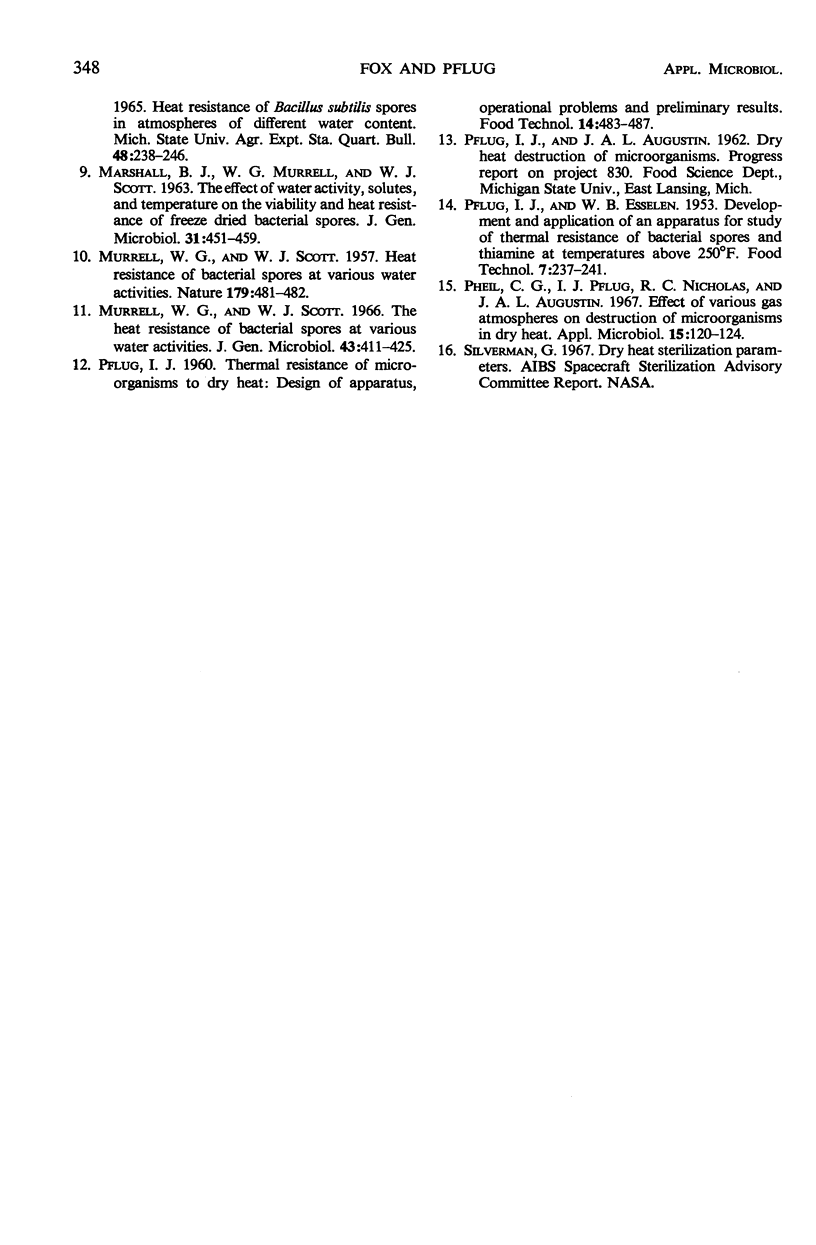
Images in this article
Selected References
These references are in PubMed. This may not be the complete list of references from this article.
- ANNEAR D. I. The preservation of bacteria by drying in peptone plugs. J Hyg (Lond) 1956 Dec;54(4):487–508. doi: 10.1017/s0022172400044776. [DOI] [PMC free article] [PubMed] [Google Scholar]
- Bruch C. W. Some biological and physical factors in dry heat sterilization: a general review. Life Sci Space Res. 1964;2:357–371. [PubMed] [Google Scholar]
- FRY R. M., GREAVES R. I. N. The survival of bacteria during and after drying. J Hyg (Lond) 1951 Jun-Sep;49(2-3):220–246. doi: 10.1017/s0022172400044120. [DOI] [PMC free article] [PubMed] [Google Scholar]
- MURRELL W. G., SCOTT W. J. Heat resistance of bacterial spores at various water activities. Nature. 1957 Mar 2;179(4557):481–482. doi: 10.1038/179481a0. [DOI] [PubMed] [Google Scholar]
- Murrell W. G., Scott W. J. The heat resistance of bacterial spores at various water activities. J Gen Microbiol. 1966 Jun;43(3):411–425. doi: 10.1099/00221287-43-3-411. [DOI] [PubMed] [Google Scholar]
- Pheil C. G., Pflug I. J., Nicholas R. C., Augustin J. A. Effect of various gas atmospheres on destruction of microorganisms in dry heat. Appl Microbiol. 1967 Jan;15(1):120–124. doi: 10.1128/am.15.1.120-124.1967. [DOI] [PMC free article] [PubMed] [Google Scholar]



